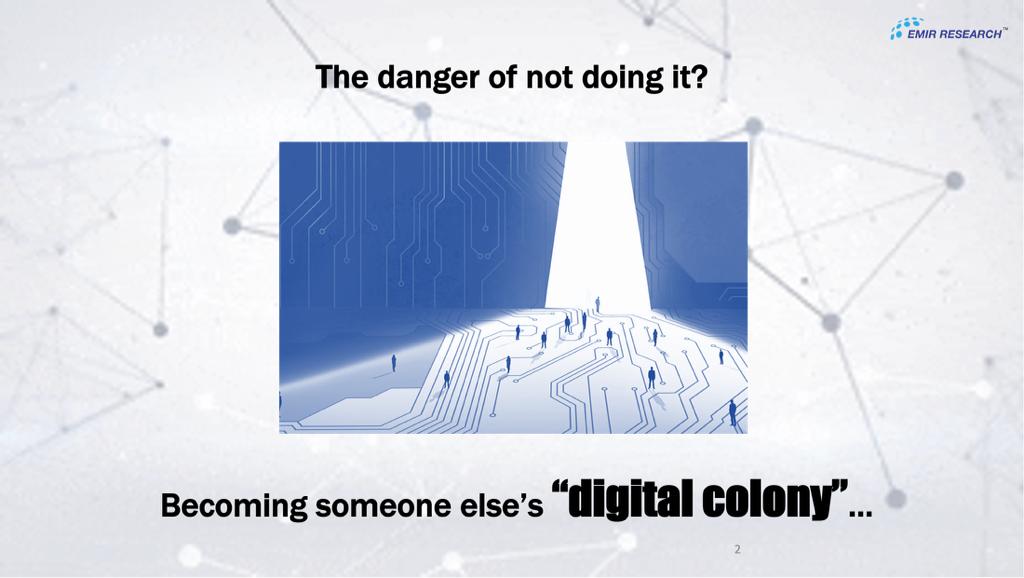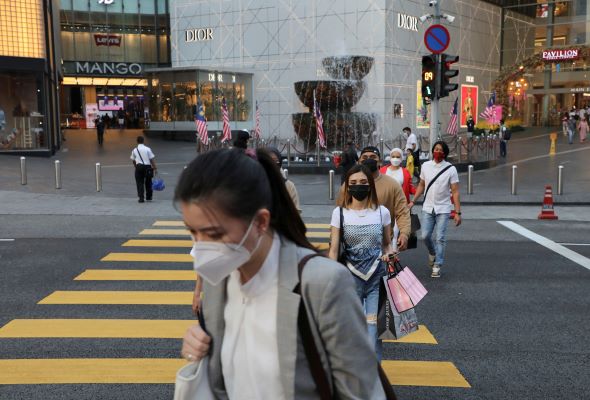
Published in Astro Awani, Business Today & theSundaily, image by Astro Awani.
In an EMIR Research article, “Strategies to combat high food inflation” (November 30, 2021), we argued that the current phenomenal price upsurges reflected the practice of price gouging – with particular reference to the middlemen.
Implicit in our statement that the “… unprecedented impact of Covid-19 can’t be used as justification for excessive mark-ups” is the real-world practice of middlemen taking advantage of the situation (of supply-side shocks in this case) to increase their profit margin further.
Now, in this article, we seek to present the economic (as in theoretical) case against price gouging, i.e., understood in relation to essential items (or items designated as essential and/or critical).
First – some underlying ideological background set within a historical context.
Price gouging as a proscribed activity applies even in the US – the so-called “paragon of capitalism” – as in the majority of the states, including Republican, albeit mainly under limited or constrained conditions such as emergency situations and pandemic.
The Republican Party (Grand Old Party/GOP), of course, is now “libertarian” or neo-liberal since the Monetarist Revolution of the late 1970s and personified by trickle-down Reaganomics of the early 1980s – captured by that ironic paraphrase that “the business of government is to stay out of business”.
It has moved away from the post-World War Two policy consensus – together with the mainstream Democratic Party which has also equally become neo-liberal – brought about principally by controversialist Senator Barry Goldwater and presidential candidate for the 1964 general election.
Goldwater (the original Donald Trump or rabble-rouser figure of American politics) was the one figure instrumental in pushing away African American voters who left the GOP in droves as a result of the Southern Strategy’s “dog-whistle” tactics (i.e., covertly appealing to racial sentiments by overtly fusing the issue of state rights with that of African-American civil rights).
But even Donald Trump (who’s been misunderstood as a “libertarian” by the Tea-Party grassroots movement and extreme right-wingers comprising the majority of the conservative evangelical bloc) once issued an Executive Order under Section 102 of the Defense Production Act (1950) – at the “height” of Covid-19 last year – which sought to pre-empt price gouging by prohibiting hoarding of designated critical items such as personal protective equipment (PPE) in the form of masks, face shields, and gloves.
The ideological acceptability and normalisation of price gouging could only be made possible with the triumph of the Monetarist Revolution and the subsequent neo-liberal order and era.
It’s essentially the expression that obscene profits (at least for some “essential” items, i.e., in a broad or loose sense) are acceptable and normal – because “that’s the price to pay in a free market”.
Cracks in the policy consensus could be discerned in the early 1970s during the stagflation period that’s first fuelled by drastic cuts in oil production by the Organisation of Petroleum Exporting Countries (Opec).
Incidentally, there are some who are making parallels between the stagflation of the 1970s with the situation now in Malaysia – with rising food prices and technical recession (from the two consecutive quarters of GDP contraction, i.e., Q2 and Q3).
The two oil price hikes (1973, 1979) introduced imported inflation into the CPI (Consumer Price Index) that in turn – contrary to the Monetarist analysis that inflation is always and everywhere a monetary phenomenon (i.e., excess money in the economy at the time caused by loose monetary policy – quantity of money outpacing output) – led to the price setting (resulting from costs distribution) conflicts in what’s dubbed the “battle of mark-ups”.
That is, capitalists (employers) and trade unions (representing workers) “competed” against each other in sequence.
At its heyday, union power – marked by militancy and reinforced by strikes – that enabled the wage (demand) “spiral” then led to the price (increase) “spiral” as businesses sought to protect profit margins.
But when the price spiral reached its limits and profits were squeezed, layoffs happened and with that the impact on aggregate demand and overall economic growth.
Stagflation was a phenomenon epitomised by sustained, i.e., uninterrupted (and, therefore, not transitory) increase in inflation leading to double-digits combined with stagnant (or negative) growth that’s caused by mass unemployment and the plunge in aggregate demand.
In other words, the stagflation period during the 1970s was, therefore, “cost-push” (imported and domestically induced) and not “demand-pull”.
Coming back to Malaysia, we aren’t generally susceptible to extremist ideologies in so far as economics is concerned.
And the ideologues – on either side of the spectrum – usually don’t openly flaunt the more extreme or “die hard”, i.e., the really unpalatable versions or aspects as logical implications and outcomes of their belief system.
Nonetheless, in the real-world of the market economy for example, there’ll always be cases where such aberrations as a given do happen from time to time – of which the current issue of vegetable price inflation is a classic example.
While there’s, as ever, a remote or slight chance that (across the board) price gouging would be allowed in unrestricted terms, it’s imperative to counter-balance and provide an alternative narrative in relation to extreme ideological arguments (whether on the “right” or on the “left”), even if just for argument’s sake.
This is because ideas matter.
Economists, particularly those advocating for (“unfettered”) free market capitalism, argue that price gouging is in accord with fundamental principles of the market dynamics of supply and demand and can, in reality, be beneficial for society in general.
They point to the critical role that prices play – in sending the right signal or message to the broader market – of the current situation in the inter-play between supply and demand of goods and services.
There are plenty of arguments against price gouging based on moral grounds. The basic or familiar economic arguments here are intended to complement and supplement the moral arguments.
Price gouging, if unchecked or unconstrained by the law, can incentivise hoarding and artificial shortage as well as price fixing due to collusion.
And instead of arguing that price gouging is good and works at the micro-level but is bad or harmful at the macro-level, it’s bad across the board.
This can be seen in the situation of price “stickiness” in which the new price sets in even after overall inflation has come down.
Or rather, the price is fixed irrespective of the costs of doing business.
Therefore, based on the facts, price gouging as a form of market (demand and supply) signal is unreliable.
In fact, price gouging can serve as a red flag, instead – pointing to hoarding and artificial shortage.
Otherwise, as in the case here in Malaysia, price gouging is a red-flag which can only directly point to profiteering – e.g., by cartels through price collusion.
The institutionalisation of price gouging can incentivise the development of black markets and/or increase imports which will exacerbate the balance of payments (where goods are sold cheaper).
On the other hand, sellers or rentiers not initially engaged in price gouging would be incentivised to also do likewise under the same pretence (e.g., market dynamics, external factors) – as often happens in the real world.
When applied across the board, inflation results simply from “competitive mark-ups” that doesn’t reflect the supply-demand fundamentals or dynamics of the market.
In other words, price gouging under limited circumstances can be extended further which finally results in overall price inflation.
A middleman who sees price gouging in relation to imported vegetables would be tempted to price gouge in relation to local produce.
The end result could be a kind of “runaway” inflation that not only erode purchasing power but leads to lower aggregate demand (i.e., where demand is outpaced by supply).
Ironically too, proponents of price gouging actually rely on what they oppose, i.e., the purchasing power of the State (in deficit spending) to satisfy the price set by the oligopolists and monopolists with their market power and concentration.
In the US, this can be seen in relation to prescription (i.e., as prescribed by doctors) drug purchases by Medicare and Medicaid – notwithstanding the discounts and negotiations.
Therefore, price gouging for non-essential items like pharmaceutical products can be seen as a kind of “corporate welfare”.
It’s like the arguments against increased bond issuance when financial institutions as traders or market participants rely on bonds for their returns (and by extension, bonusses for the executives).
This includes the bets on the yields of the bonds and hence the arguments now orchestrated to compel central banks to increase interest rates.
Price gouging is never justifiable under any circumstances.
Higher profits should not come at the expense of society. It’s only when all stakeholders, i.e., both sellers and buyers, are in a win-win situation that profits can be sustainable.
Jason Loh Seong Wei is Head of Social, Law & Human Rights at EMIR Research, an independent think tank focussed on strategic policy recommendations based on rigorous research.

